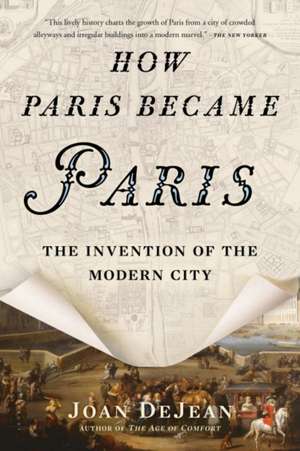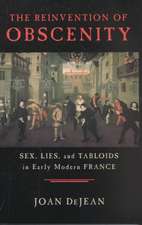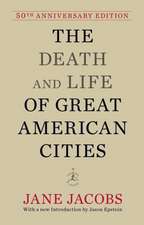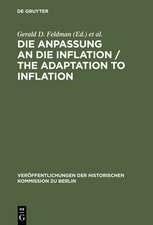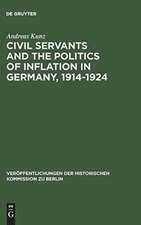How Paris Became Paris
Autor Joan DeJeanen Limba Engleză Paperback – 15 iul 2015
Preț: 62.64 lei
Preț vechi: 82.40 lei
-24% Nou
11.99€ • 12.42$ • 10.00£
Carte disponibilă
Livrare economică 28 februarie-14 martie
Specificații
ISBN-10: 162040768X
Pagini: 320
Ilustrații: B&W throughout. 1x 8-page color insert.
Dimensiuni: 137 x 206 x 25 mm
Greutate: 0.27 kg
Editura: Bloomsbury USA
Locul publicării:London, United Kingdom
Caracteristici
Notă biografică
Joan DeJean is Trustee Professor at the University of Pennsylvania. She is the author of ten books on French literature, history, and material culture, including most recently The Age of Comfort: When Paris Discovered Casual and the Modern Home Began and The Essence of Style: How the French Invented High Fashion, Fine Food, Chic Cafés, Style, Sophistication, and Glamour. She lives in Philadelphia and, when in Paris, on the street where the number 4 bus began service on July 5, 1662.
Recenzii
Witty and engaging . . . With panache and examples from primary sources, guidebooks, maps, and paintings, she illustrates how Paris changed people’s conception of a city’s potential.
The City of Light is indisputably one of the world’s most beautiful, and as Joan DeJean, who’s written exhaustively about France and the French, explains in How Paris Became Paris: The Invention of the Modern City, its transformation began in the 17th century, with a great urban plan for boulevards, bridges, sidewalks, and public parks. Visit with new insight and appreciation or just marvel at its conception with DeJean’s book in hand.
DeJean’s depth and scope of research are impressive . . . Like its subject, DeJean’s biography of Paris emanates charm and wit. What makes [her] analysis so intriguing is her capacity to weave strands of history together. With such rich context, How Paris Became Paris is more than a history: It’s the best kind of travel guidebook.
This lively history charts the growth of Paris from a city of crowded alleyways and irregular buildings into a modern marvel.
Highly readable and well illustrated with color plates and numerous black-and-white images, this book is a joy for anyone who loves Paris. Because this work is aimed at a general audience, there are no footnotes, although quotations are identified and references given. A solid bibliography ends the work.
Descriere
At the beginning of the seventeenth century, Paris was known for isolated monuments but had not yet put its brand on urban space. Like other European cities, it was still emerging from its medieval past. But in a mere century Paris would be transformed into the modern and mythic city we know today.Though most people associate the signature characteristics of Paris with the public works of the nineteenth century, Joan DeJean demonstrates that the Parisian model for urban space was in fact invented two centuries earlier, when the first complete design for the French capital was drawn up and implemented. As a result, Paris saw many changes. It became the first city to tear down its fortifications, inviting people in rather than keeping them out. Parisian urban planning showcased new kinds of streets, including the original boulevard, as well as public parks and the earliest sidewalks and bridges without houses. Venues opened for urban entertainment of all kinds, from opera and ballet to a pastime invented in Paris, recreational shopping. Parisians enjoyed the earliest public transportation and street lighting, and Paris became Europe’s first great walking city. A century of planned development made Paris both beautiful and exciting. It gave people reasons to be out in public as never before and as nowhere else. And it gave Paris its modern identity as a place that people dreamed of seeing. By 1700, Paris had become the capital that would revolutionize our conception of the city and of urban life.
